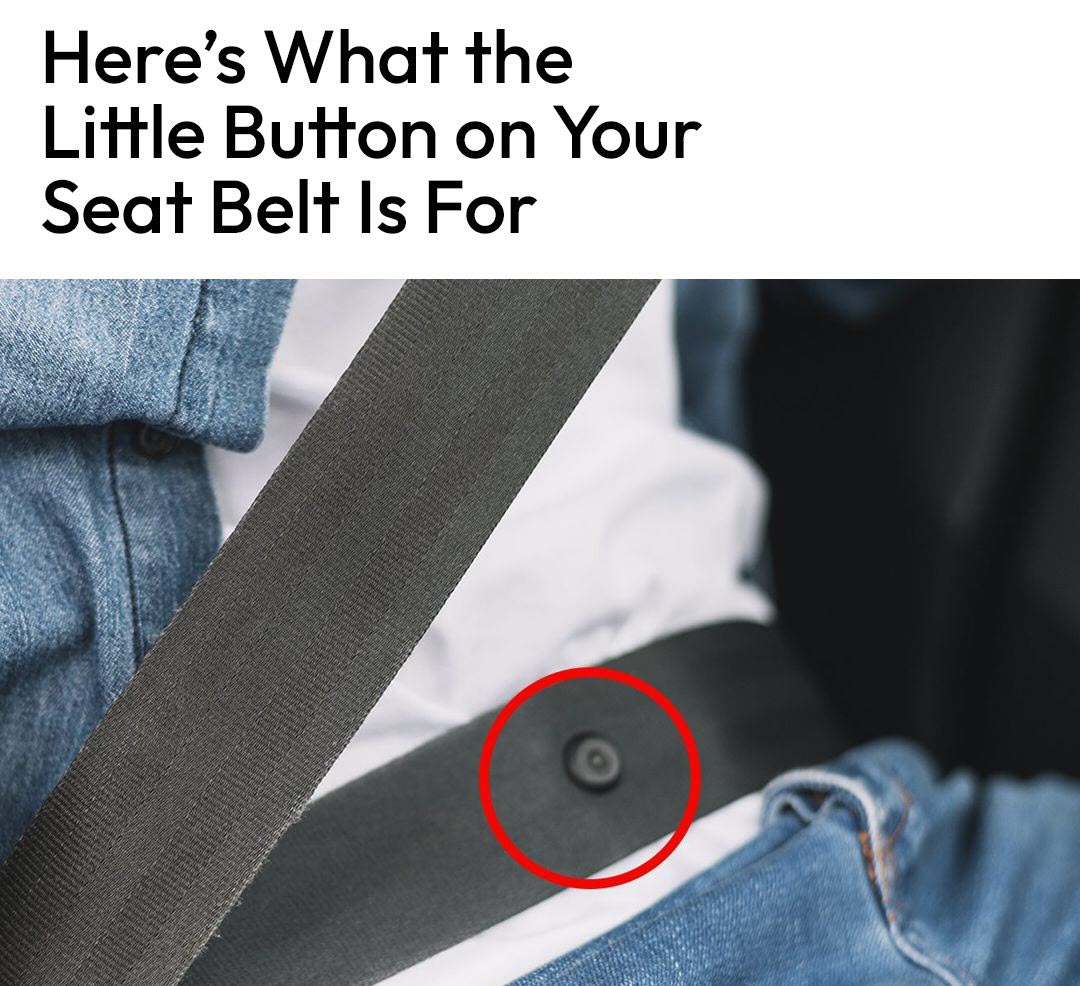When it comes to the small details in our cars, many features go unnoticed. Modern vehicles are designed with precision, and every component serves a purpose, even if we don’t always realize it. One such overlooked feature is the tiny button on the seatbelt strap. You may have seen it before and wondered why it’s there. Surprisingly, this little button is an essential part of your car’s seatbelt system, designed to improve both convenience and functionality.

What Is the Seatbelt Stop Button?
This small yet important feature, commonly referred to as a stop button or retainer button, is designed to keep the latch plate—the metal piece that clicks into the buckle—securely in place on the strap. Without this button, the latch plate would slide all the way down to the bottom of the belt each time you unbuckle, making it a hassle to retrieve every time you need to fasten your seatbelt.
Imagine getting into your car and having to dig near the floor every single time to find the latch plate. That would be frustrating, right? The stop button prevents this inconvenience by keeping the latch plate in a fixed, easily accessible position. It ensures that buckling up is quick, simple, and hassle-free.
The Purpose of a Secondary Stop Button
Some vehicles come equipped with a second stop button positioned further up on the seatbelt strap. This additional button serves another practical purpose—it prevents the latch plate from sliding too far upward. While the seatbelt is designed to allow some movement, the second stop button ensures that the latch plate remains within a comfortable reach for the driver or passenger.
This thoughtful design detail accommodates people of all heights and seating positions. Whether you adjust your seat closer to the steering wheel or prefer to sit further back, the seatbelt remains within an optimal range, making it easier to grab and fasten when needed.
What Happens If the Stop Button Breaks?
Like any other car component, seatbelt stop buttons can experience wear and tear over time. Repeated use, accidental force, or general deterioration can cause them to break or loosen. If this happens, you may start experiencing the exact issue the stop button was designed to prevent—your latch plate sliding too far down, making it more difficult to buckle up quickly.
Fortunately, fixing a broken stop button is a simple and inexpensive task. Replacement buttons are available online or at most auto parts stores. They usually come in easy-to-install kits that contain everything you need. Even if you’re not mechanically inclined, installing a new stop button takes just a few minutes and typically requires only a small screwdriver or another basic tool to snap it into place.
How to Prevent Stop Button Wear and Tear
While stop buttons are durable, they aren’t indestructible. A few simple precautions can help extend their lifespan and keep them functioning properly for years:
- Avoid excessive pulling or tugging on the button when adjusting your seatbelt.
- Check your seatbelt regularly for signs of wear, such as fraying fabric or a weakening button.
- Reinforce a loose button before it completely detaches to prevent further inconvenience.
Taking these preventive measures ensures that your seatbelt remains in top condition and continues to function as intended.
A Tiny Yet Essential Feature
It’s fascinating how such a small, easily overlooked component can make such a big difference in convenience and usability. The stop button on your seatbelt is a perfect example of smart engineering in modern cars—where even the tiniest details are designed with purpose in mind.
Next time you buckle up, take a second to appreciate this small yet vital part of your seatbelt. Without it, finding and fastening your seatbelt would be a far more frustrating experience. And if it ever breaks, you now know exactly how to fix it. This is just another reminder that in car design, nothing is random—every feature exists for a reason, no matter how small it may seem.





